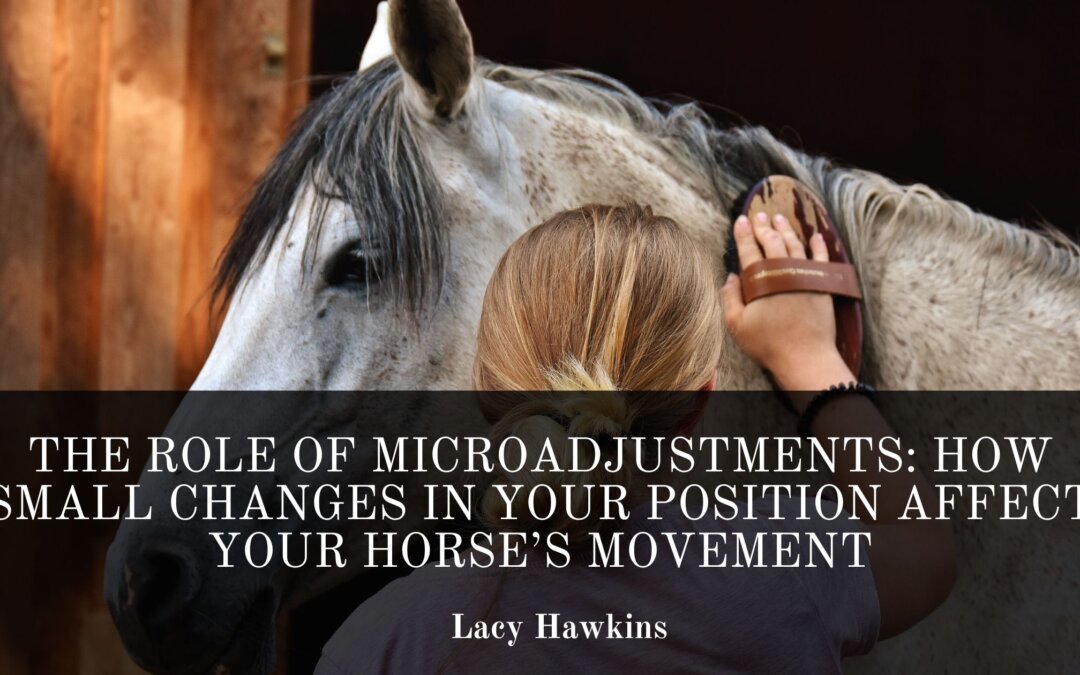In horseback riding, the smallest changes can make the biggest difference. While major aids like leg pressure or rein contact are essential for communication, it’s the subtle microadjustments in your position that often have the most profound impact on your horse’s balance, rhythm, and responsiveness.
What Are Microadjustments?
Microadjustments are the slight shifts riders make in their body—sometimes so subtle they’re barely visible. These include tilting your pelvis slightly forward or back, softening your elbows, relaxing your jaw, adjusting your weight in the stirrups, or even breathing differently. While these might seem minor, horses are incredibly sensitive animals that can pick up on these cues and respond accordingly.
Why Microadjustments Matter
Horses mirror our balance and posture. When a rider unknowingly leans too far forward or collapses through one hip, the horse has to compensate—often resulting in crookedness, stiffness, or an uneven gait. Small shifts in your body can help restore symmetry, lighten your horse’s forehand, or encourage better impulsion from the hindquarters.
For example, slightly rotating your shoulders can help guide your horse into a correct bend. A small weight shift to your inside seat bone can help balance the horse during a turn. These changes promote harmony and reduce the need for more forceful corrections later.
Improving Communication
Riders who master microadjustments develop a more refined communication system with their horses. Instead of relying on strong rein or leg cues, they use their seat and posture to direct movement. This results in a more relaxed horse, better engagement, and improved responsiveness.
When your body is quiet but intentional, your horse can tune in more effectively. Think of it like turning down the noise in a conversation—you’re more likely to be heard when you’re not shouting over distractions.
How to Build Awareness
Developing an understanding of microadjustments starts with body awareness. Here are a few ways to improve:
- Video Yourself: Watching a video of your ride can highlight habitual imbalances or tension you may not notice in the moment.
- Work with a Ground Coach: A trainer on the ground can give real-time feedback on your posture and how it’s affecting your horse.
- Try Lunge Lessons: Riding without reins or stirrups on the lunge line can help you focus solely on your seat and balance.
- Incorporate Off-Horse Exercises: Pilates, yoga, and balance training improve core strength and body control—key components of making effective microadjustments.
Conclusion
Riding is a constant conversation between horse and rider, and microadjustments are your quietest, yet most effective words. When you become more aware of your own body, you start to influence your horse’s movement with greater precision and care. Over time, these small changes lead to big improvements—in your connection, your communication, and your performance as a team.
